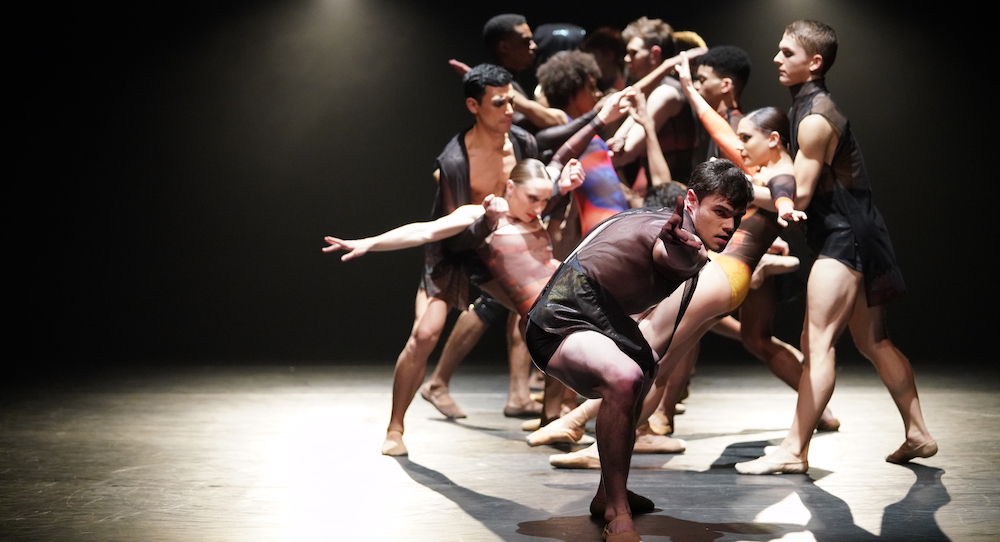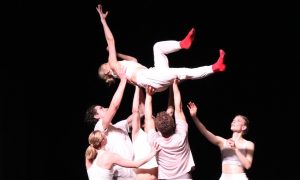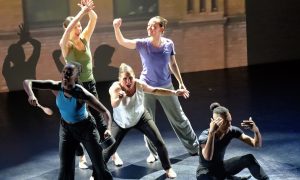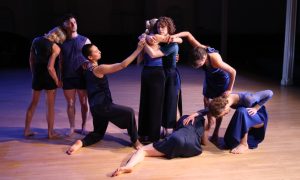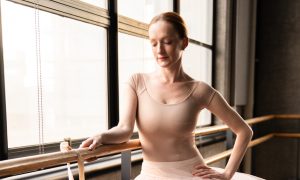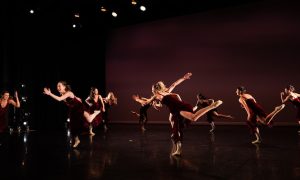The Joyce Theater, New York, New York.
February 22, and March 1, 2019.
It’s hard to believe Complexions Contemporary Ballet is celebrating its 25th anniversary. Master choreographer Dwight Rhoden and legendary dancer Desmond Richardson founded the company in 1994, with a vision to fuse dance styles and cultures while breaking down confines of race, genre, time and place. And, a quarter of a century later, Complexions continues to literally perform its mission. Not only is Complexion’s repertoire diverse, but its company members also personify this value. Compared to most other dance companies (of any genre), Complexions is extremely varied in terms of both race and body type. The dancers are free to show their individuality — a bright smile from Tatiana Melendez, tranquil technique from Thomas Dilley and quirky beautiful shapes from Jillian Davis — and, because of these differences, moments when the company dances “as one” are more breath-taking than the precision of the Rockettes.
Complexions recently completed its residency at The Joyce Theater February 19-March 3. The set list included excerpts from audience favorites spanning the company’s 25-year history, as well as one world and one New York City premiere. While the montage of past pieces demonstrated the company’s varied themes and movement vocabulary, it felt like I was reading random chapters from different novels, none of which I knew the characters, setting or context. I appreciate the idea of a medley to celebrate the company’s history but feel choosing one full piece of repertoire paired with one full premiere would have been equally, if not more, cohesive. Because I didn’t know the context of the “From Then to Now” excerpts, I will only speak on the works I saw in their entirety.
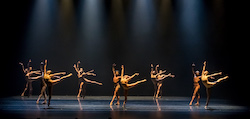
Complexions Contemporary Ballet in ‘Bach 25’. Photo by Sharen Bradford.
To start, I was blown away by Bach 25, an NYC premiere and the opening of Program A. The curtain rose quickly to reveal the full company of dancers in flesh-colored leotards (with bodies like Greek gods and goddesses), slicing, undulating, lingering, turning, contracting and leaping through space. Complexions exemplifies the notion that, to be a genius, you have to master a craft before you can break the rules. And the dancers are so technically brilliant in the norms of classical ballet that a hunched shoulder, hiked hip or parallel leg then becomes the most stunning thing you’ve ever seen.
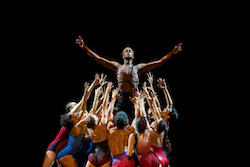
Brandon Gray and Company in ‘Star Dust’. Photo by Sharen Bradford.
Star Dust, which premiered in 2016, is a ballet tribute to David Bowie. I expected to love this piece and was surprised at my disappointment. The dancers’ lip-syncing felt kitschy, and the choreography in unison seemed either under-rehearsed or lacking due to the dancers’ exhaustion from Act I. For the first half of Star Dust, the female dancers (and, at one point, one male dancer) donned pointe shoes. Moments worked: sexy slow walks en pointe across the upstage, dynamic and sharp arabesques. But, for the most part, the toe boots appeared to hinder the women’s movement. When they slipped back into ballet slippers late in the piece, it felt like weighted chains had lifted and they could finally dance with abandon and ease. Overall, Star Dust did not seem to break barriers but instead squeeze in to fit a commercial mold like the juke-box musicals we’re so often seeing on Broadway. The Act was joyful and dynamic and memorable, sure. But the real heart of Complexions felt a bit compromised.
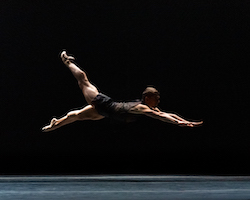
Complexions’ Thomas Dilley in ‘Woke’. Photo by Nina Wurtzel.
The world premiere, Woke, was the heart of Complexions the audience was waiting for. The piece combined modern, ballet and even hip hop styles with popular music and powerful spoken word. The subject matter is topical and digestible (even if uncomfortable at times). Strangely, Woke is the piece most reminiscent of Complexions of yore starring Richardson himself — connected, exploratory, commanding and vulnerable.
It’s wonderful that Complexions has remained so poignantly relevant and recognized in the dance world over these 25 years. Yet, there is also something unsettling in the fact that, 25 years have gone by and Complexions is still so unique in its multicultural, physically-diverse company and risk-taking choreography, both technically and thematically. This is still far from the norm in nearly every genre of dance. In many ways, Complexions is still breaking the same boundaries. When will they finally be broken?
By Mary Callahan of Dance Informa.


